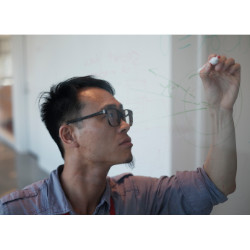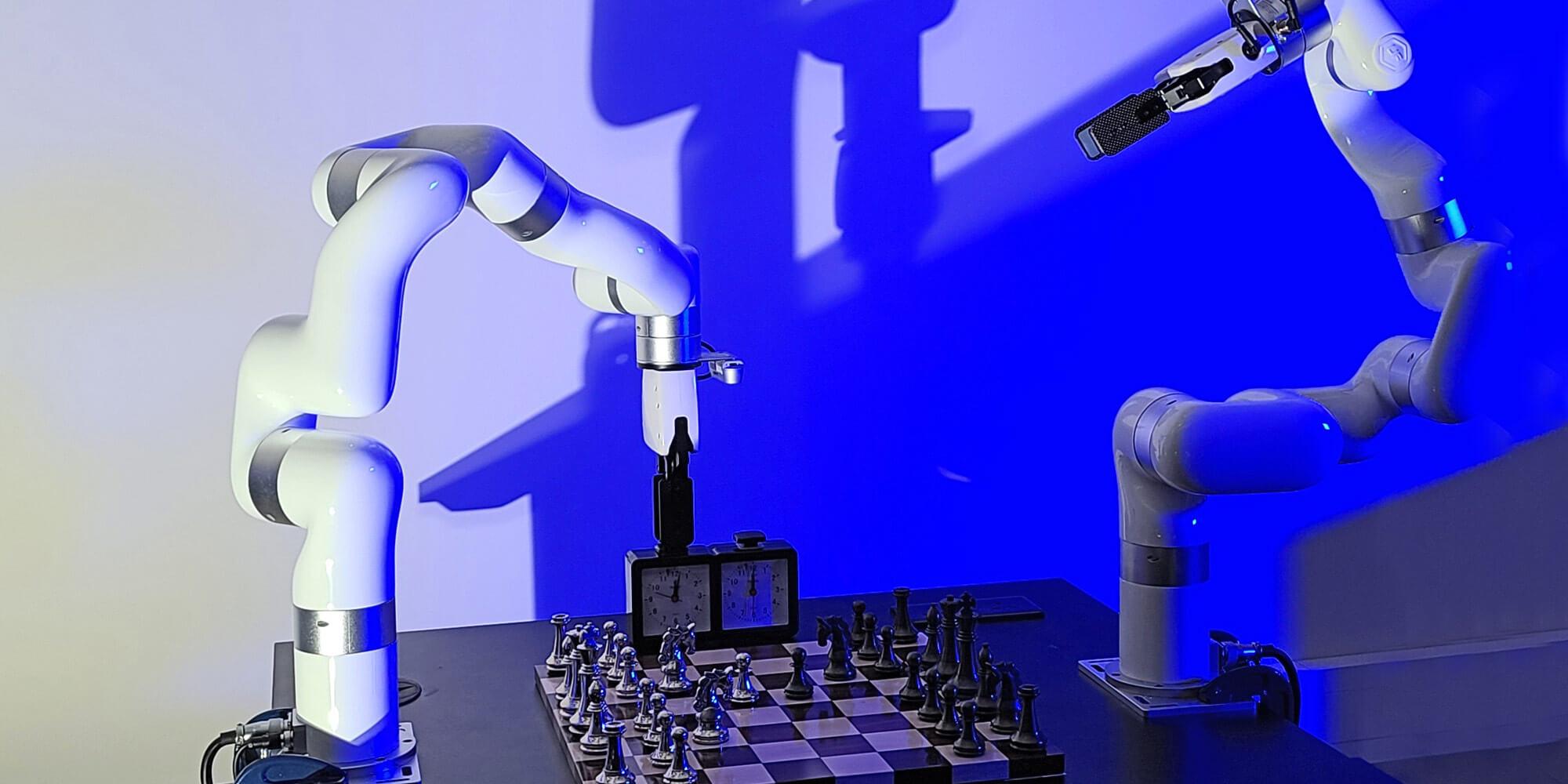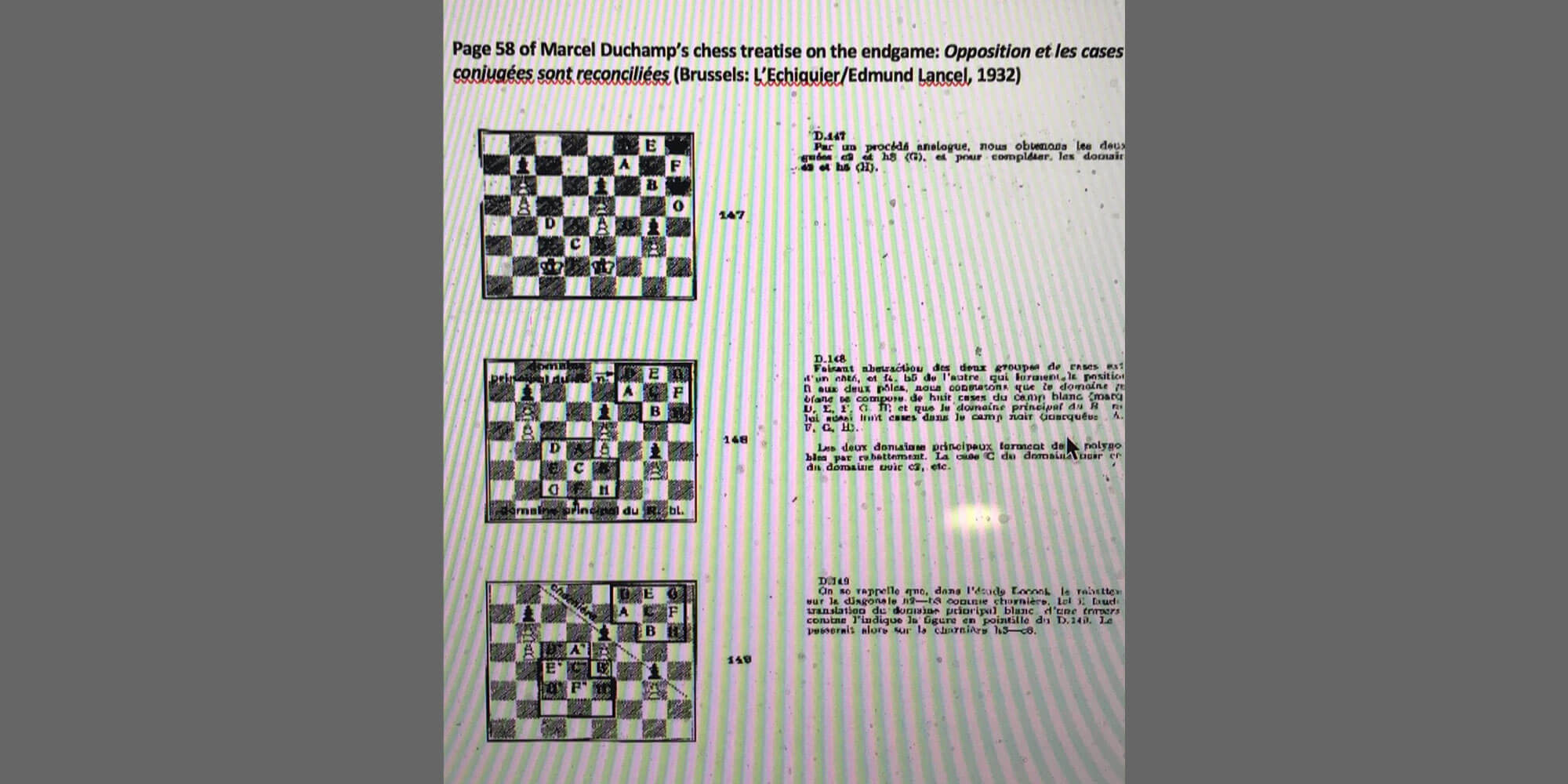Symposium & Panel Discussion
Is post-human art far too human? Taking this question as a starting point, the five speakers of this panel expand this inquiry in five disparate trajectories. Media artist Maurice Benayoun (HK/FR) questions how artworks can open new perspectives by engaging the world as subjects rather than objects. Philosopher Dr. Martin E. Rosenberg (US) examines how an artwork can make visible problematic epistemological baggage by deploying a metaphor, model and allegory of human-computer interaction. Neuroscientist Dr. Beatrice de Gelder (NL) discusses her investigations on nonverbal communication and emotions in view of gestures, faces, bodily movements, and voices; Curator-theorist Dr. Tanya Ravn Ag (DK) inquires how art’s ontological bearing shifts through the entanglement of art and technogenesis. Artist Dr. RAY LC (HK/US) experiments with the impact of anthropomorphic behavioral design on human perception of their machinic counterparts. Artist-scholar Lisa Park SoYoung (HK/KR) advocates for the need to cross-examine diverse ontological conceptions of art and technology in seeking alternative ways forward. Starting with introductory presentations from each of the five speakers, a panel discussion and a Q&A session moderated by AI ethics expert, Prof. De Kai (HK/US) follows to interface, question, and distillate the ideas emerging from different disciplinary, cultural, philosophical, and ludic standpoints.
Video
Speakers:
 Maurice Benayoun is a media art pioneer, theorist, curator, and professor based in Hong Kong and Paris, whose accolades include the Ars Electronica Golden Nica and the SIGGRAPH Award, amongst others. Moving freely between media boundaries, from virtual reality to large-scale public art installations, and from BCI to the blockchain, Benayoun has exhibited across major international museums in about 30 countries. His recent research focuses on urban media art, critical fusion, behavioural design, the blockchain, transactional art, BCI driven neuro-design, and the morphogenesis of human values. www.moben.art
Maurice Benayoun is a media art pioneer, theorist, curator, and professor based in Hong Kong and Paris, whose accolades include the Ars Electronica Golden Nica and the SIGGRAPH Award, amongst others. Moving freely between media boundaries, from virtual reality to large-scale public art installations, and from BCI to the blockchain, Benayoun has exhibited across major international museums in about 30 countries. His recent research focuses on urban media art, critical fusion, behavioural design, the blockchain, transactional art, BCI driven neuro-design, and the morphogenesis of human values. www.moben.art Martin E. Rosenberg’s dissertation (UM, 1990) addressed how 20th century-avant-garde artists and philosophers deployed the scientific concept of “emergence.” He has published on Freud and Deleuze, Pound, Duchamp and Pynchon, Beckett, Cage, Kiki Smith, and Arakawa and Gins. He has designed instructional software, theorized about hypermedia, taught hybrid and online graduate courses, and published works on the role of metaphors like chess in transdisciplinary inquiry. He is now writing on the cognitive neuroscience of jazz improvisation. https://thenewcentre.academia.edu/MartinERosenberg
Martin E. Rosenberg’s dissertation (UM, 1990) addressed how 20th century-avant-garde artists and philosophers deployed the scientific concept of “emergence.” He has published on Freud and Deleuze, Pound, Duchamp and Pynchon, Beckett, Cage, Kiki Smith, and Arakawa and Gins. He has designed instructional software, theorized about hypermedia, taught hybrid and online graduate courses, and published works on the role of metaphors like chess in transdisciplinary inquiry. He is now writing on the cognitive neuroscience of jazz improvisation. https://thenewcentre.academia.edu/MartinERosenberg Beatrice de Gelderis Professor at Maastricht University in the Netherlands and director of the Brainand Emotion Lab. Her main areas of expertise are the neural basis of visual and audio-visual processes and associated clinical deficits of visual perception and communication. Her current research focuses on face and body perception using a variety of brain imaging methods, also in combination with VR and, recently, the neuroscience of art. She has published over 300 scientific articles and her book „Emotions and the Body“ was published by Oxford University Press in 2016.She obtained major funding from the EU (FET, ERC-Advanced,ERC-Synergy). www.Beatricedegelder.com
Beatrice de Gelderis Professor at Maastricht University in the Netherlands and director of the Brainand Emotion Lab. Her main areas of expertise are the neural basis of visual and audio-visual processes and associated clinical deficits of visual perception and communication. Her current research focuses on face and body perception using a variety of brain imaging methods, also in combination with VR and, recently, the neuroscience of art. She has published over 300 scientific articles and her book „Emotions and the Body“ was published by Oxford University Press in 2016.She obtained major funding from the EU (FET, ERC-Advanced,ERC-Synergy). www.Beatricedegelder.com Dr. Tanya Ravn Ag (DK): Tanya Ravn Ag, Ph.D., is a Danish curator and scholar focused on perceptual experience and technogenesis in relation to media art and urban media aesthetic phenomena. Following a research fellowship at the School of Creative Media, City University of Hong Kong, she is currently a postdoc researcher at the Center for Art as Forum, Institute of Arts and Cultural Studies at the University of Copenhagen. She chairs the IIAC (ISEA International Advisory Committee) and has edited Digital Dynamics in Nordic Contemporary Art (Intellect, 2019) and co-edited What Urban Media Art Can Do – Why, When, Where, and How? (av edition, 2016). www.tanyaravnag.net
Dr. Tanya Ravn Ag (DK): Tanya Ravn Ag, Ph.D., is a Danish curator and scholar focused on perceptual experience and technogenesis in relation to media art and urban media aesthetic phenomena. Following a research fellowship at the School of Creative Media, City University of Hong Kong, she is currently a postdoc researcher at the Center for Art as Forum, Institute of Arts and Cultural Studies at the University of Copenhagen. She chairs the IIAC (ISEA International Advisory Committee) and has edited Digital Dynamics in Nordic Contemporary Art (Intellect, 2019) and co-edited What Urban Media Art Can Do – Why, When, Where, and How? (av edition, 2016). www.tanyaravnag.net RAY LC’s practice creates interactions and environments for building bonds between human beings and between humans and machines, by utilizing the nonverbal communication media of movements, sounds, and cinematic storytelling. He studied computer vision at UC Berkeley and neuroscience at UCLA, applying such technologies to performance, media art, and fashion at Tokyo. He holds an MFA from Parsons School of Designand a PHD from UCLA before becoming Assistant Professor at City University HK SCM. https://raylc.org/
RAY LC’s practice creates interactions and environments for building bonds between human beings and between humans and machines, by utilizing the nonverbal communication media of movements, sounds, and cinematic storytelling. He studied computer vision at UC Berkeley and neuroscience at UCLA, applying such technologies to performance, media art, and fashion at Tokyo. He holds an MFA from Parsons School of Designand a PHD from UCLA before becoming Assistant Professor at City University HK SCM. https://raylc.org/ Lisa Park SoYoung (HK/KR): is a scholar, artist, curator, and art-event organizer. Her art practices, curatorial projects, and general life experiences drive her academic research, which is currently focused on cultural imperialism in the new media art-world. Her practices span across brainwave performances, academic presentations, research publication, and organization of exhibitions and events. She is co-curating and producing Ars Electronica 2021 Garden Hong Kong project. Lisa has a BFA from York University, and an MFA and PhD from City University of HK. www.lisapark.net
Lisa Park SoYoung (HK/KR): is a scholar, artist, curator, and art-event organizer. Her art practices, curatorial projects, and general life experiences drive her academic research, which is currently focused on cultural imperialism in the new media art-world. Her practices span across brainwave performances, academic presentations, research publication, and organization of exhibitions and events. She is co-curating and producing Ars Electronica 2021 Garden Hong Kong project. Lisa has a BFA from York University, and an MFA and PhD from City University of HK. www.lisapark.netModerator:
 De Kai’s work in AI, language, music, creativity, and ethics urges cultures to interrelate. Professor of Computer Science and Engineering at HKUST and Distinguished Research Scholar at Berkeley’s ICSI, he was named ACL Founding Fellow for pioneering contributions to machine learning of AIs like Google/Yahoo/Microsoft Translate. De Kai is also creator of one of Hong Kong’s best known world music collectives, ReOrientate, and was one of eight inaugural members of Google’s AI ethics council. dekai.org
De Kai’s work in AI, language, music, creativity, and ethics urges cultures to interrelate. Professor of Computer Science and Engineering at HKUST and Distinguished Research Scholar at Berkeley’s ICSI, he was named ACL Founding Fellow for pioneering contributions to machine learning of AIs like Google/Yahoo/Microsoft Translate. De Kai is also creator of one of Hong Kong’s best known world music collectives, ReOrientate, and was one of eight inaugural members of Google’s AI ethics council. dekai.orgCredits
Panel Chair: Maurice Benayoun
Panel moderator: Professor De Kai
Panel coordinator: Lisa Park SoYoung
Panel assistant: Charlie Yip





